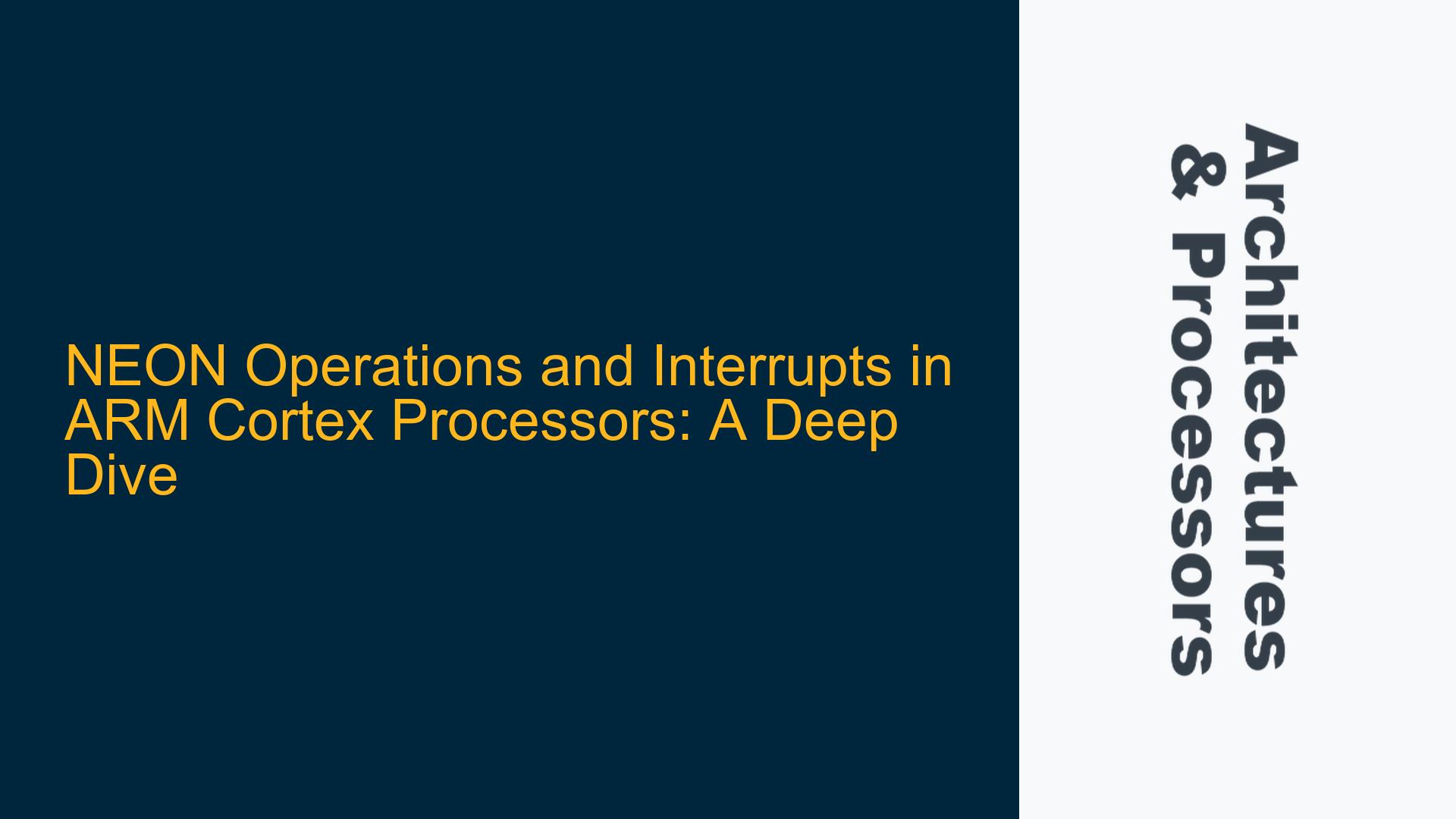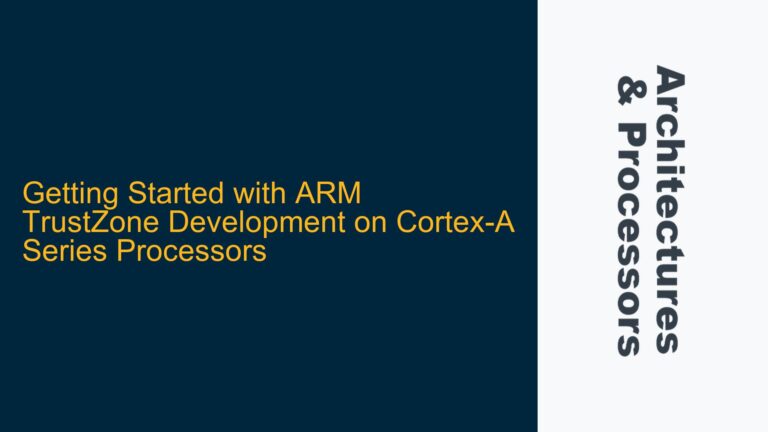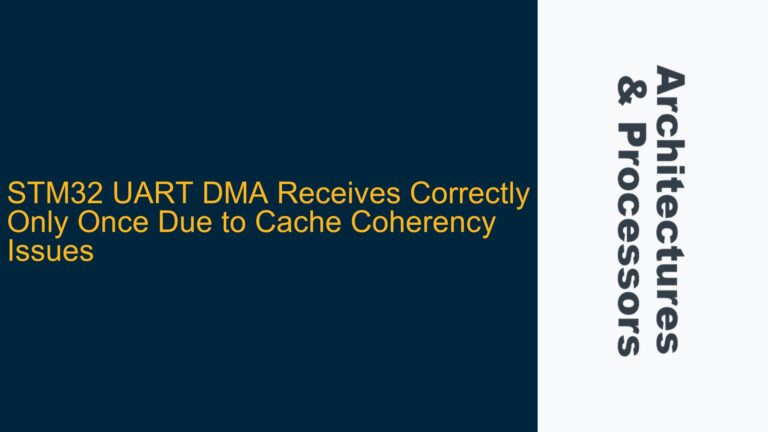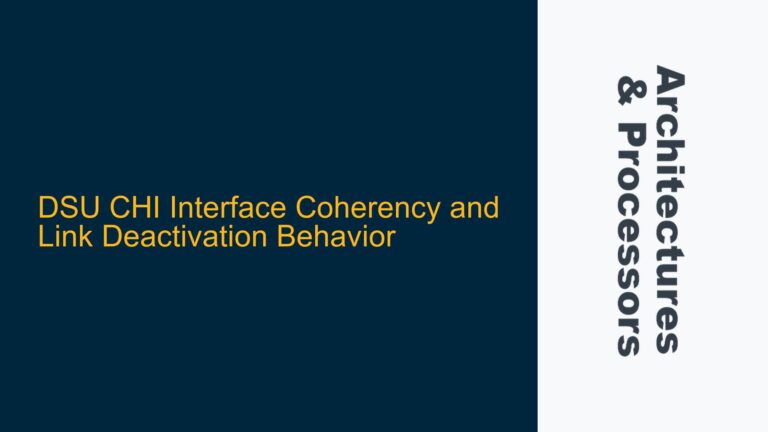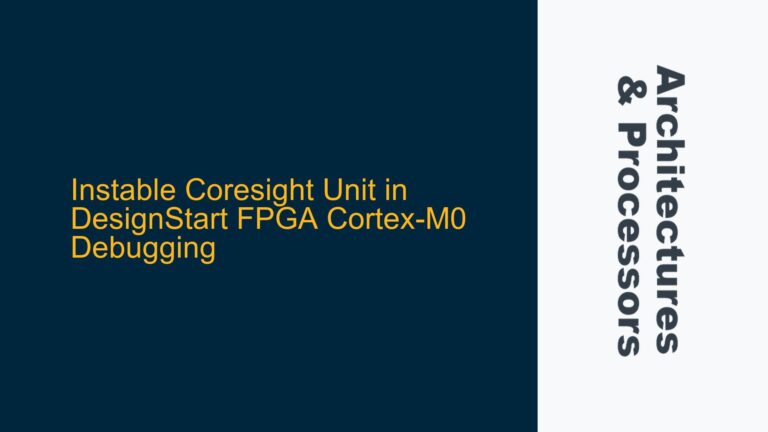NEON Operations and FPU Interrupt Behavior in ARM Cortex Processors
The ARM architecture, particularly in its Cortex series processors, integrates advanced SIMD (Single Instruction, Multiple Data) capabilities through the NEON engine, alongside traditional Floating-Point Unit (FPU) operations. A critical aspect of these operations is their interaction with the processor’s interrupt mechanism. Understanding whether NEON operations cause interrupts, similar to FPU operations, is essential for optimizing performance and ensuring real-time responsiveness in embedded systems.
In ARM Cortex processors, FPU operations often trigger interrupts due to the need for context switching. When a task utilizes the FPU, the processor must save and restore the FPU registers to maintain state consistency across task switches. This process can lead to frequent interrupts, especially in systems with heavy floating-point computations. The question arises: do NEON operations, which also handle parallel data processing, exhibit similar interrupt behavior?
NEON, ARM’s advanced SIMD architecture, is designed to accelerate multimedia and signal processing applications by performing multiple operations in parallel. Unlike the FPU, which is primarily focused on scalar floating-point operations, NEON handles both integer and floating-point operations in a vectorized manner. This fundamental difference in operation type and data handling suggests that NEON might interact differently with the processor’s interrupt mechanism.
To delve deeper, we must consider the architectural specifics of ARM Cortex processors. The Cortex-M and Cortex-A series, for instance, handle NEON and FPU operations differently due to their distinct design goals. Cortex-M processors, typically used in real-time embedded systems, prioritize deterministic behavior and low latency. In contrast, Cortex-A processors, aimed at application processing, focus on high performance and multitasking capabilities. These differences influence how NEON and FPU operations are managed and whether they trigger interrupts.
In the context of the Linux kernel, FPU operations are known to cause interrupts due to the kernel’s need to manage FPU state across context switches. This management ensures that floating-point registers are correctly saved and restored, preventing data corruption and ensuring task isolation. However, NEON operations, being part of the SIMD paradigm, might not require the same level of state management, potentially reducing the frequency of interrupts.
FPU State Management and NEON Operational Differences
The core of the issue lies in the state management requirements of FPU and NEON operations. FPU operations necessitate precise handling of floating-point registers, which are part of the processor’s architectural state. When a task switch occurs, the kernel must save the current FPU state and restore the state of the incoming task. This process is inherently interrupt-driven, as the kernel must intervene to perform the context switch.
NEON operations, on the other hand, involve vector registers that handle multiple data elements simultaneously. While NEON also requires state management, the nature of SIMD operations often allows for more efficient handling. In many ARM Cortex processors, NEON registers are treated similarly to general-purpose registers, with the kernel managing their state during context switches. However, the frequency and necessity of these interrupts can vary based on the specific processor implementation and the operating system’s handling of SIMD operations.
Another factor to consider is the lazy context switching mechanism employed by some ARM processors. This mechanism delays the saving and restoring of FPU/NEON states until absolutely necessary, reducing the number of interrupts. For FPU operations, lazy switching can mitigate interrupt frequency but does not eliminate it entirely. For NEON operations, the impact of lazy switching might be more pronounced, potentially reducing interrupts to a minimal level.
Furthermore, the distinction between FPU and NEON operations extends to their usage patterns. FPU operations are often scalar and sequential, requiring frequent context switches in multitasking environments. NEON operations, being parallel and vectorized, might be used in bursts, allowing the kernel to manage state more efficiently and reducing the need for frequent interrupts.
Optimizing NEON and FPU Operations to Minimize Interrupts
To address the interrupt behavior of NEON and FPU operations, several strategies can be employed. First, understanding the specific ARM Cortex processor’s handling of these operations is crucial. Developers should consult the processor’s technical reference manual to determine the exact behavior of FPU and NEON state management.
In systems where interrupt latency is critical, minimizing the use of FPU operations can reduce the frequency of interrupts. Leveraging NEON for parallelizable tasks can offload some of the computational burden from the FPU, potentially reducing the overall interrupt load. However, this approach requires careful consideration of the application’s requirements and the specific capabilities of the NEON engine.
Another strategy involves optimizing the kernel’s handling of FPU and NEON states. Ensuring that the kernel employs lazy context switching effectively can reduce unnecessary interrupts. Additionally, developers can explore custom context switching mechanisms tailored to their application’s needs, further optimizing interrupt behavior.
In conclusion, while FPU operations in ARM Cortex processors are known to cause interrupts due to state management requirements, NEON operations might exhibit different behavior. The parallel nature of NEON and its efficient handling of vectorized data can reduce the frequency of interrupts, especially in processors with optimized SIMD state management. By understanding the architectural differences and employing targeted optimization strategies, developers can minimize interrupt overhead and enhance system performance.
